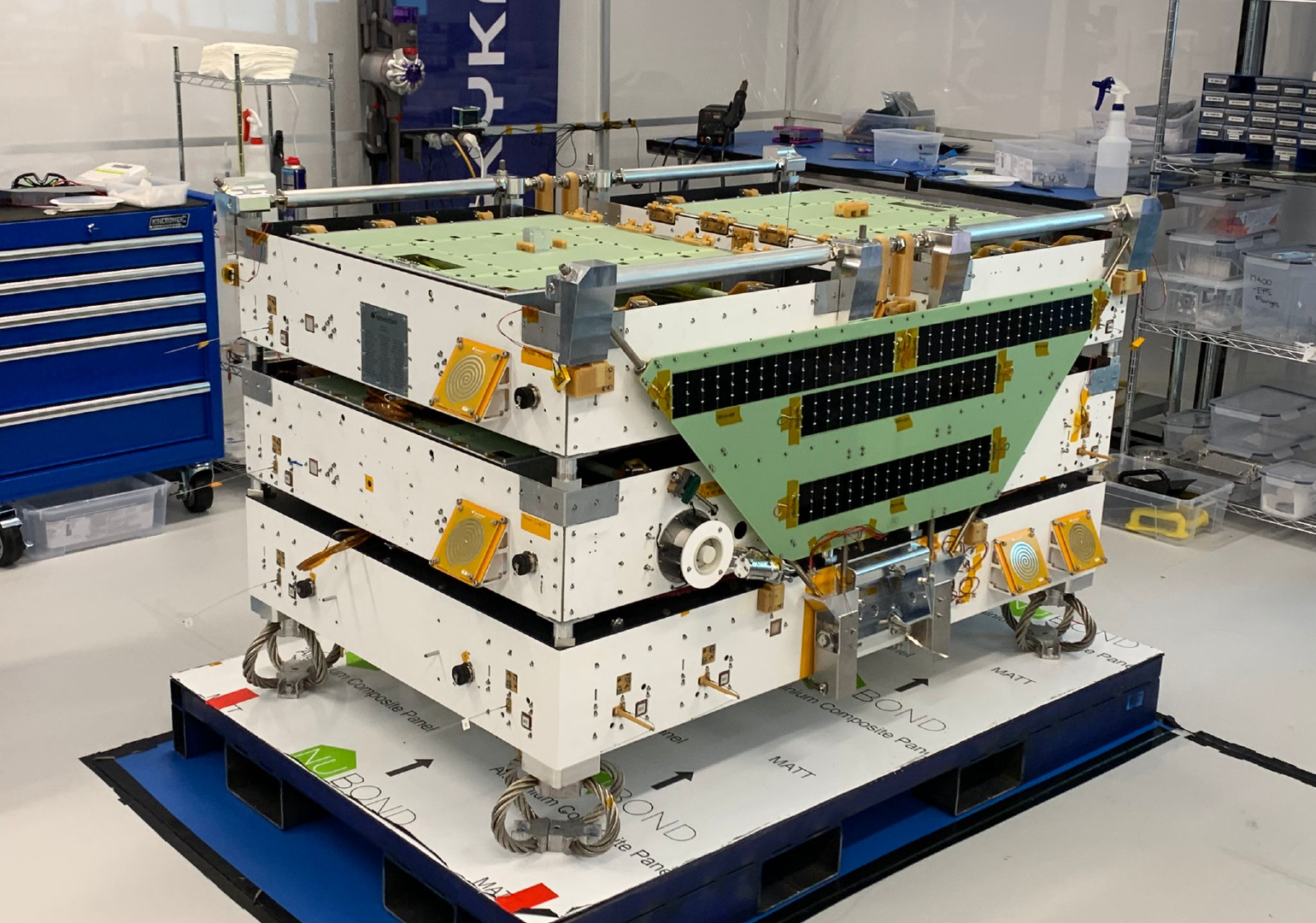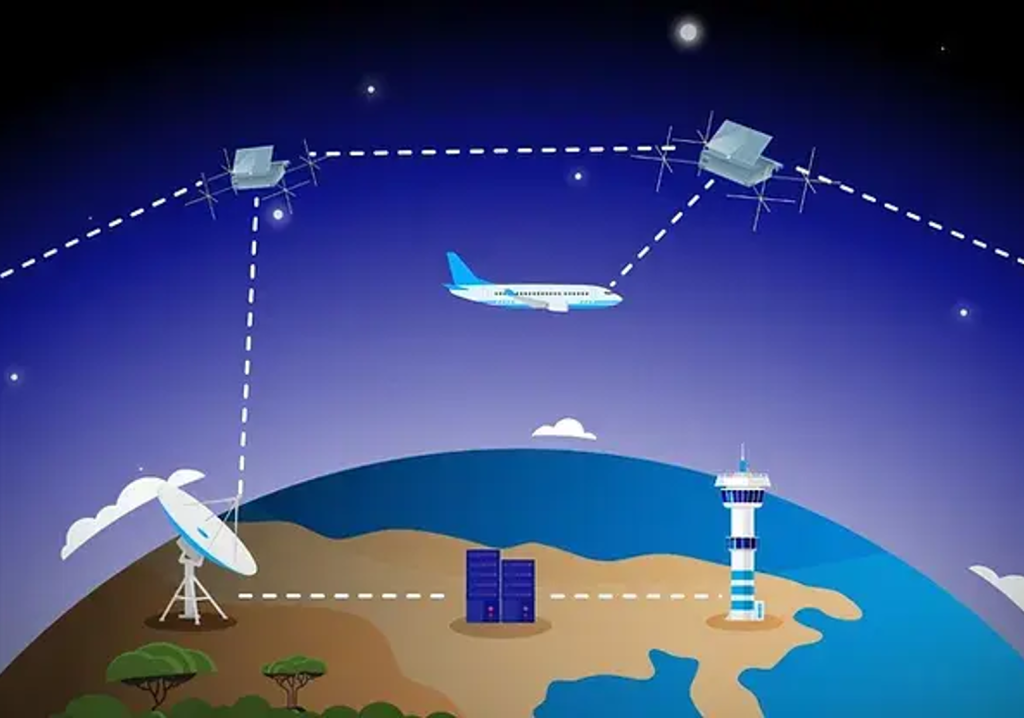A successful, world-first trial of a new space-based VHF communications and aircraft-tracking solution points to entirely new capabilities and possibilities for the global aviation sector.
For aircraft in flight, the current generation of ground-based communication and aircraft surveillance infrastructure supports air traffic controllers’ work by providing voice and data communication, and real-time aircraft-tracking services.
These systems rely on a direct line of sight between the antennas on the ground and the aircraft. Therefore, they stop working once the aircraft dips below the horizon at around 300 km from the radar.
When those aircraft are over the ocean, voice communication and tracking are severely impaired. Skykraft, an Australian company dedicated to the development of space-based air traffic management communication and surveillance services, took one giant leap toward solving that issue for the aviation industry with a successful launch and world-first trial in June.
The Canberra-based business’ spacecraft offers radio links between aircraft and air traffic controllers in real time.
“From low-Earth orbit, our spacecraft sees out to the horizon about 3000 kilometres away,” said Dr Douglas Griffin, Chief Engineer and Director of Skykraft. “Our radios need to be very sensitive, because the signals are weak when they reach the spacecraft and, when we transmit, we have to transmit much more loudly and with highly directional antennas so the messages are received loud and clear.”
That’s easier said than done, considering the unique challenges presented by the fact that the system is operating in space.
As a result, the spacecraft require a level of engineering typically reserved for only the most extreme environments.
Engineering a spacecraft
“The communication technology that we use is based on terrestrial systems but optimised for the rigours of space,” Griffin said. “For example, the thermal environment tends to be a lot more harsh in space.
“Deep space is minus 270°C. The surface of the sun is about 6000°C while the Earth’s is around 20°. So, the components of your spacecraft end up somewhere between these extremes.”
For the Skykraft spacecraft, in low-Earth orbit, things aren’t quite so dramatic. They typically have to deal with temperatures between 80° and minus 40°, depending on whether they’re in eclipse, or in sunlight.
“A vital part of spacecraft development is thermal design,” Griffin explained. “We have heaters on board. Heat straps and radiators dump excess heat into space, and thermal blankets also provide insulation.”
The spacecraft carry battery packs and will have a propulsion system for orbital manoeuvres.
“We also have to deal with the effects of the ionosphere,” he said. “That is the plasma that comes off the sun and captured by the magnetic field of the Earth.
“It’s a weak conductor, and deflects radio waves and changes their polarisation. To compensate for these effects, we have to be clever in the design of our radios and antennas to meet international safety standards.””

Building a constellation at scale
The recent successful launch and test was over the southern area of Australia’s flight information region, conducted under a collaboration agreement with Airservices Australia. Skykraft ensured the appropriate test protocols were implemented and verified to exclude any potential interference to operational air traffic management systems.
In mid-2024, a next-generation Skykraft spacecraft will go through the same process.
Assuming that’s a success, 2025 will see the launch of the first eight of around 200 spacecraft, intended to form a global constellation that provides the entire aviation industry with these new capabilities.
“Although we design, build and operate a lot of spacecraft it’s really important to remember that we are an aviation services infrastructure company,” Griffin said.
“We’re not just doing space because it’s interesting, we are a commercial company delivering valuable services to the aviation industry to enable more efficient flights, and we are the vehicle that will enable that.”
“We’re delivering a commercial service to solve real-world issues. A space-based air traffic management service will enable air travel to find new efficiencies. Aircraft can be routed more efficiently, so they burn less fuel. Aircraft operators will be able to turn aircraft around more quickly. There’s also a safety dividend.”
Engineers needed
In the last 12 months, Skykraft has grown from a fledgling business of around 25 people to a much larger entity. With a current headcount of 60, a number which is still growing, Griffin and his team are engaged in a constant search for all types of engineers.
“What we want to do is attract people [who] are motivated by doing some really fascinating engineering,” he said. “And we require just about every engineering discipline – including software engineers, electrical engineers, mechanical engineers, space engineers, systems engineers, RF engineers, thermal engineers and more.
“So many disciplines are involved in getting a spacecraft up there and delivering the service.”
The work is exceptionally engaging, Griffin said.
“In April, I was supporting the final vibration tests of our spacecraft,” he said. “Then, a couple of months later, I saw it deployed from the Falcon 9 launch vehicle, flying at seven-and-a-half km per second, 525 km above the Earth. It’s a very satisfying work environment!”
